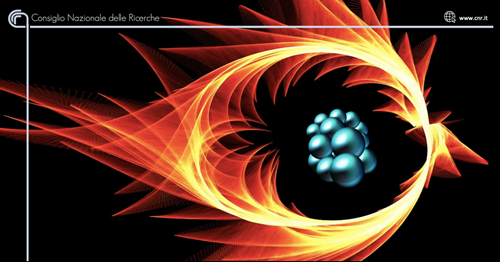A collaboration of three institutes of the National Research Council, Cnr-Iom, Cnr-Ino and Cnr-Ifn, has achieved an important result which shows the possibility of holding together particles with the same negative charge (which otherwise repel each other). The Photon Bound Exciton study, published in Nature Physics, opens up unprecedented opportunities for the creation of innovative materials to be used in the development of new technologies.
Positive and negative electric charges attract each other, forming atoms, molecules, and all that we usually refer as matter. Negative charges instead repel each other, and in order to form atom-like bound objects some extra glue is needed, in order to compensate this electrostatic repulsion and bind the particles together.
In a paper recently published in the journal Nature Physics, an international team, with the collaboration of Cnr-Iom, Cnr-Ino e Cnr-Ifn, demonstrated for the first time that photons, the particles which compose light, can be used to glue together negative charges, creating a novel form of matter they named a Photon Bound Exciton.
The team is led by Simone De Liberato, from the University of Southampton and carried out within the European project FET-Open MIR-BOSE coordinated by Raffaele Colombelli of the CNRS and Université Paris-Sud, to verify a theoretical prediction published only the year previous, manufacturing a nano-device capable of trapping electrons inside nanoscopic quantum wells.
“We first synthesized this nanometer device, then we enclosed it between two gold mirrors, which trapped photons and focused light energy close to electrons, greatly increasing the interaction between light and matter. It was therefore observed that an electron remains trapped in the well, bound to the other negatively charged electrons in a new electronic configuration stabilized by the photon ", explains Giorgio Biasiol of Cnr-Iom, who led the group that dealt with the growth of the structures quantum well with the MBE (Molecular Beam Epitaxy) technique, while Iacopo Carusotto of Cnr-Ino was responsible for the design of the experiment.
"This experiment confirmed what was expected in light of the photoelectric effect, the discovery of which earned Einstein the Nobel Prize in 1921, and basically demonstrates the possibility of designing new artificial atoms, greatly expanding the list of materials available for scientific and technological applications, and in particular photonic devices. This has led to the possibility of using light as a sort of subatomic hinge, capable of binding electrons together to create new objects similar to atoms”, concludes Biasol.


